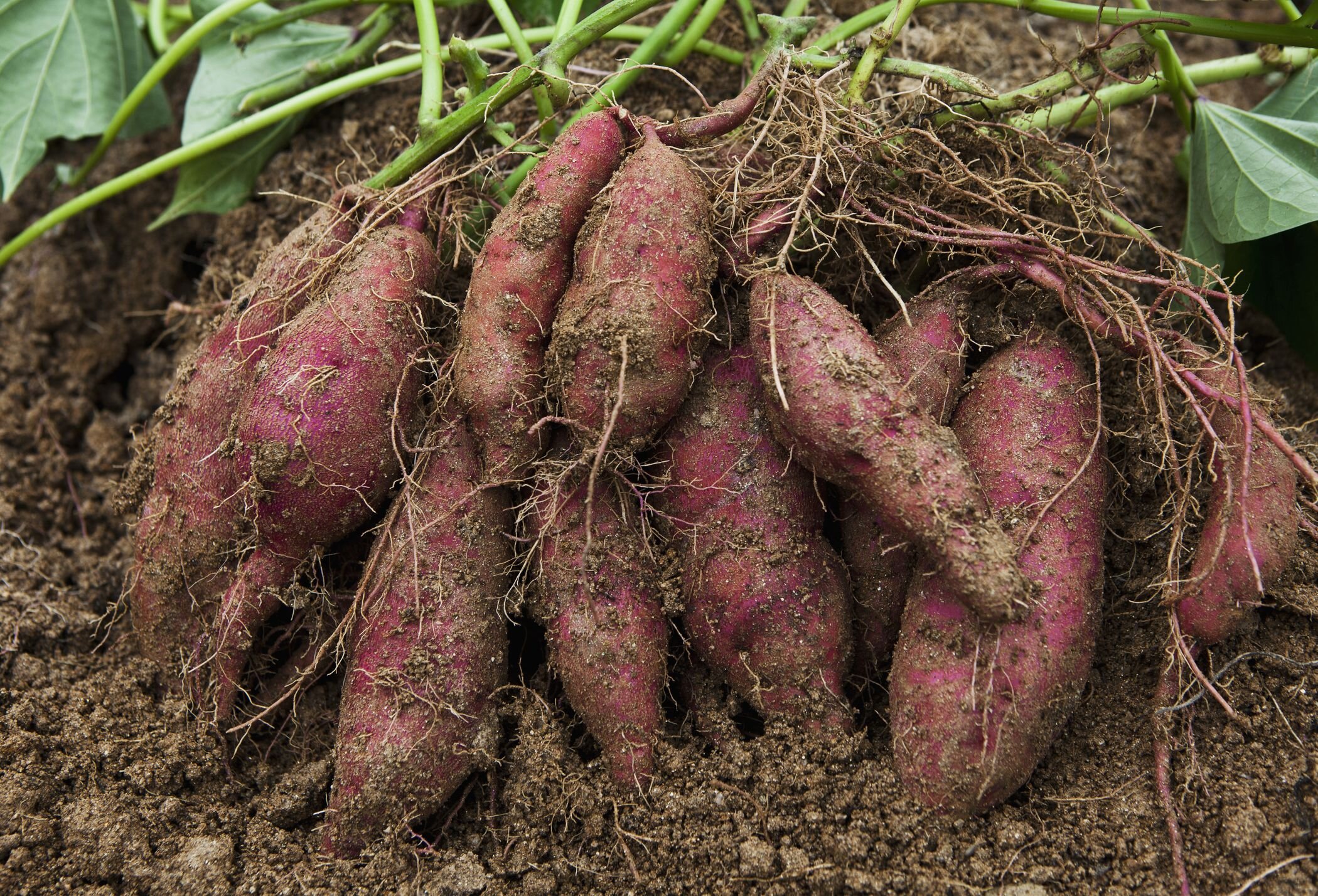Starting today, we have sweet potato slips available for sale in our online store for next day curbside pick up. They are sold 3 slips to a pot, and each slip turns into a plant that produces 5 to 10 pounds of sweet potatoes. Harvesting them in the fall is so fun, and you will feel like a gardening champion. Please note that the slips must be kept well watered at planting time for the first couple of weeks. Daily soakings will ensure the growth of healthy plants. When you buy 6 plants, we will throw in a 7th for free.
This is the 12th year of our fundraising partnership with the Vermont Community Garden Network - that is a lot of sweet potatoes grown over the years in support of the educational and food security programming throughout the state. We love this organization and the work it does to make gardening accessible to all.
Sweet potatoes are fun to grow and are a nutrient dense food that stores well through the winter. They are not grown like “Irish” potatoes (which actually come from Peru), and they are not even related. Sweet potatoes originate from South America and they are in the morning glory family. They grow as a long vine along the ground and produce large, orange sweet potatoes just below the surface of the soil. They can also be trained to climb up a trellis, and they can even be grown in containers. In 2009, Starksboro customers shared their very interesting container method via a photo album, which you can view here.
The organic slips come from Jones Family Farms in Bailey, North Carolina, and are approved for use in certified organic production by Vermont Organic Farmers, LLC.
Planting Instructions
Sweet potatoes are grown from slips, which are cuttings from a parent vine. The slips grow best in a loose, sandy or silty soil that drains well. If they are grown in a rich dark soil they may discolor but are still good to eat.
Transplant the slips into garden beds during June, once nighttime temperatures are consistently above 50 degrees. Transplant in the late afternoon or on an overcast day. Lay the slips on their sides with 2/3 of the slip buried a half inch under the soil. Water enough to keep the soil moist, for the first couple of weeks.
Plant the slips 10 to 18 inches apart in rows that are two to three feet apart. The rows or raised bed should be elevated 4 to 8 inches above the ground level to allow the sweet potatoes room to form.
Keep the cuttings watered while they are getting established. The leaves that were originally on the planted slips will dry up and fall off leaving just the vine stem. New leaves will emerge from the cuttings as the slips become established. Hoe around the vines to cultivate weeds and mulch with straw if desired. The sweet potato vines will cover the ground reaching 5 to 10 feet in length.
Pest Control – Deer love sweet potato leaves, so be sure your planting area is fenced if deer are a problem. A flying gold colored beetle may chew round holes in the leaves. The vines are tough and will keep growing despite insect damage.
Harvesting – Sweet potatoes are dug and harvested in late September through mid October, a day or two before the first predicted frost. Most of the sweet potatoes will be just below the parent plant. Each plant can produce up to six sweet potatoes.
Curing and Storing – After harvesting, dry the sweet potatoes on the ground for two or three hours. Allow them another 10 to 14 days to cure at room temperature or above, before storing the sweet potatoes at a temperature between 50 and 60 degrees F.
Unlike potatoes, sweet potatoes should not be kept cold in a garage, refrigerator or outbuilding. If properly cured and stored, they will keep until April. Enjoy!

